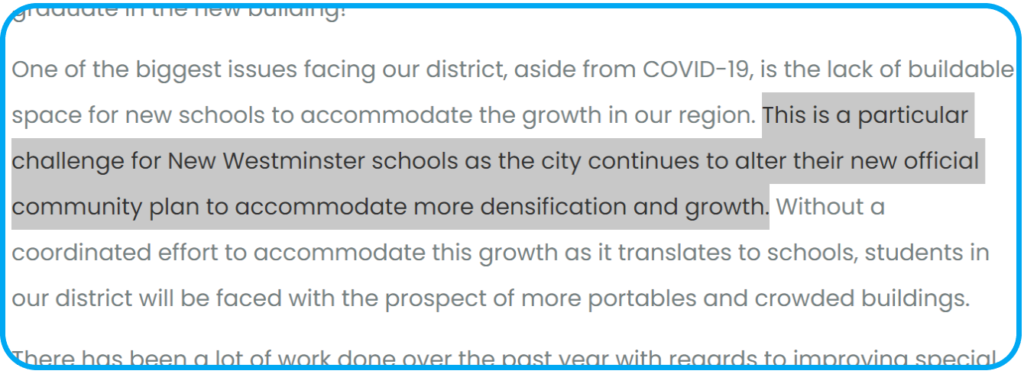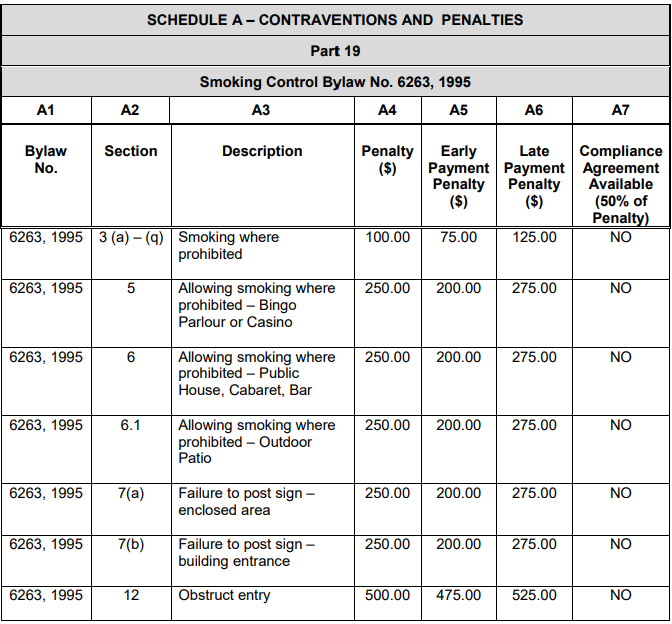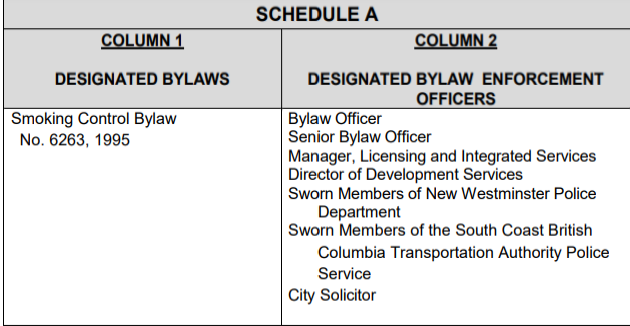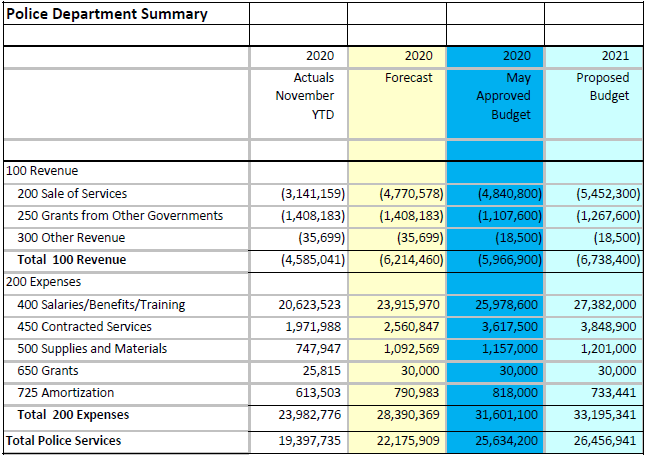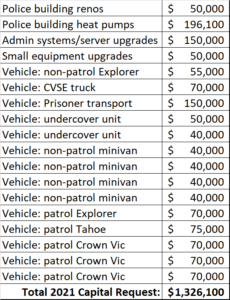We had Council on November 30th, and I have to say we are really getting used to this zoom meeting thing. Hardly an “uh…you are on mute” at all. We had a pretty lengthy agenda, starting with a waived Public Hearing:
Business License Amendment Bylaw (Amusement Centre) No. 8229, 2020
The owner of the Arcade in Sapperton has been trying to shift to a business model that the City has not allowed before, and one the Province’s liquor laws have tried to prevent. From the City side, that has to do with 1990s (public nuisance? moral panic?) issues about arcades that got baked into our zoning and business bylaws. This includes it not being in a Mall (where, I guess Paul Bart was going to prevent the youts causing trouble?), it being a larger footprint than currently allowed, not having controls on content (in the 1990s, most pornography was distributed by stores in similar business districts as arcades), and hours of operation (late night Arcades kept the youts from their assigned homework tasks). On the liquor side, it is generally not ok to have liquor, youth, and amusements in the same place. Any of the two, but not all three. Add to this a desire to have kids in a place where you can sell beer past midnight, and the Liquor Branch doesn’t know what to do.
So after a couple of years operating without a Liquor License on a Temporary Use Permit, all of the ducks have been lined up, and Amendment Bylaws have been drafted for our Zoning Bylaw, Permit Fees Bylaw, and Business License Bylaw. This would normally require an Opportunity to be Heard, but due to the length of the application process, the extensive public consultation the owner has gone through and the predominantly positive feedback from those consultations, Council has agreed to waive the need for this Council appearance. We moved to approve the Bylaw amendment.
Engineering and Electrical Utility Amendment Bylaw Report
We discussed Utility Rates in a Workshop a couple of weeks ago and I wrote about it here. This is the Bylaw that sets the rate changes for 2021. I look forward to discussions in the 2021 about the sustainability of our reserves and our current reserve-replenishing strategy, but in the short term full agree with the need to assure financial solvency of these utilities and that these rate increases are important to meet that goal.
For a “typical” single family house, this means $42 more a year for water, $60 more for sewer service and $30 more for solid waste, a total of about $11 a month more for your City utilities. Add to this about $42 more a year or $3.50 a month for electricity (based on typical household use).
Having already approved utility rate changes in principle, the debate before us here was whether to continue waiving the 1% Climate Action Levy increase as we did in response to the uncertainty of the COVID situation early last year. This, in effect, reduced everyone’s electricity rates by 1%, or about $15/year on average. There is a bit of history here, but the Climate Levy was introduced to offset the removal of the “Rate Rider” from our rates to match a similar move by BC Hydro in 2019. The idea behind the levy was to create a stable fund source to support various energy and emissions reduction projects in the community – the work we need to do to get to our stated Climate Action goals.
I very much support this fund, and think it is prudent for the City to go back to funding the levy as originally intended. There will always be a reason to wait one more year before we take these kinds of actions. There always has been a reason to wait one more year, and that’s how we got to where we are today where a problem we have known about for decades is a sudden emergency. The levy was a good idea before COVID, it is still a good idea, and it will pay for things that save the residents and businesses of New Westminster money in the long term. The cost of us not doing this is going to cost the average New Westminster electricity customer much more than the $15 this levy will cost.
It was a split vote, but I voted with the majority to move us back to the full levy in 2021.
The following items were Moved on Consent:
Budget 2021 Public Engagement Summary Report
The City led a Public Engagement exercise around budget issues, as we discussed in a recent Budget Workshop. Here we officially receive this into the Council record. Having more than 1,000 people engage in something like this is pretty good for New Westminster, but we do need to recognize this is not a scientific survey – people who choose to engage in this type of survey are by nature self-selecting. The cross-reference with demographic data is always interesting. Property owners were (as is typical) overrepresented compared to renters, youth were underrepresented, as were immigrants and visible minorities. Still, a good overview of how the voting base sees the City’s budget priorities.
Child Care Grant Update for 232 Lawrence Street and Next Steps
There is a piece of City land on 232 Lawrence Street that we were hoping to make available for a Childcare facility, as we have limited City land ownership in Queensborough, and it is the part of the City most lacking in childcare facilities. In applying for grants and doing some work assessing the land, we ran up against what is probably a typical reason why there is so little licensed childcare in Q’Boro: the difficulty of building an appropriate space with existing flood plain restrictions and geotechnical costs for that part of Lulu Island. Simply put, the cost per childcare spot is too high to meet Provincial criteria for support, mostly because the Province has shifted goalposts that make the Q’boro project no longer eligible.
I see where the Province is coming from, why spend $70,000 per space when others can be built for $40,000 per spot. But this builds in regional inequity – people in Q’Boro are just as deserving of local childcare (and have more dire need for it) as those who live on cheaper-to-develop lands on New Westminster’s mainland.
Meanwhile, staff are looking for other opportunities in Q’Boro. It seems that the owners of Queensborough Landing are not interested in leasing any of their many empty storefronts for this use, and there are limited other spaces available. We will continue to work with the School District as they have expansion plans for Queen Elizabeth School that may be able to accommodate Childcare expansion as well. Work to do.
COVID-19 Pandemic Response – Update and Progress from the Five Task Forces
This is our regular update from the internal Pandemic Response task forces in City Hall. Not much in here, actually, as things are pretty much on a new-business-as-usual status.
Grimston Park Amendment Bylaw No. 8219, 2020 – Results of Alternative Approval Process
Not surprisingly, the completely asinine “Alternative Approval Process” for disposal of a small part of City lands where MOTI has already built a piece of infrastructure had zero responses. What a waste of staff time and City resources, but at least the Record got some advertising revenue. So, supporting local media for the win, I guess. The land can now be transferred to the Province.
Acting Mayor Appointments for January to December 2021
We all take turns being Acting Mayor. That means during that month we do mayor things if the mayor is not around. That may mean chairing a meeting, or signing important paperwork, or cutting a ribbon. I sued to be March and August (I don’t have kids, so rarely take vacations in those months), but it looks like we are going to try two-month appointments for a change, so I will be February and March.
I note than every other Councillor gets 61 days as Acting Mayor, while Councillor Trentadue gets 62, and I only get 59. A travesty.
Reorganization of Task Forces and Appointment of Chairs and Council members to Task Forces and Advisory Committees
On direction from the Mayor, with agreement of Council, we are making some adjustments of Task Forces and Advisory Committees. There are small changes, but mostly a continuation of the existing work areas.
1135 Tanaka Court: Rezoning for Cannabis Infused Product Manufacturing Facility – Preliminary Report
The owners of this empty big-box commercial space in Queensborough would like to use it to manufacture food products infused with cannabis for the burgeoning market for this stuff. Aside from one of the ingredients of the foodstuffs being cannabis, the use is pretty much consistent with the current zoning, but a few changes are needed to comply with federal cannabis production regulations. This is a preliminary report, and it may go to Public Hearing, so I’ll hold further comments until then.
6 – 320 Stewardson Way (Pacific Breeze Winery): Application for Manufacturers Lounge
The little “garage winery” just off Stewardson Way wants to open a lounge area with 20 seats. They have been manufacturing on site for several years, and have offered tasters on site, but now want people to be able to enjoy their products like they do on nearby Steel & Oak Brewery. They are applying from the Province for an appropriate license, and require endorsement from the City. Done.
618 Carnarvon Street (Urban One Project): Request for Construction Noise Bylaw Exemption
A high-rise construction project downtown included in its plan the encapsulation of a stretch of the SkyTrain line just west of 6th Street. Construction of this requires installing forms so concrete can be poured, and for seemingly obvious reasons, some of this work cannot occur while the SkyTrain is running. This is a big job, and will take a couple of months. The builders will take some efforts to reduce the impact of this noise as much as possible, but there is no doubt it is going to cause some stress to some residential neighbors.
There are also going to be some disturbances of traffic on Clarkson Street, but Engineering are working with the builders to mitigate the impacts on neighbors.
Agnes Greenway Phase 1 Implementation & Engagement Update
The long-awaited Agnes Greenway is going to start rolling out this winter. It will arrive first with some temporary protection measures (the glue-down flexi-posts instead of concrete) to allow for a bit of a trial and active consult with the changes before we cast it in expensive concrete – which is better installed in the summer anyway. It is also going to involve some re-adjustment of traffic patterns on Agnes and Carnarvon, partly to simplify the conflict zones and make it safer for all users, partly to continue to protect the vast majority of street parking for residents. I think people angry about the changes will blame the bike lanes, not the free street parking. Such is the way with these things. That said, there is going to be a lot of attention paid to loading zones, accessibility, and transit system function through this trial, so don’t be afraid to give us some feedback. We want to get this right.
Revenue Anticipation Borrowing Amendment Bylaw No. 8243, 2020
This is our annual just-in-case borrowing bylaw. As the bulk of our revenue as a City arrives all at once at tax time, we maintain a cash flow with that in mind so we can make our monthly payroll. That said, we are usually pretty tight to break even, so it is possible that we would need to borrow for a short period of time (weeks) in the event an emergency happens at the worst possible time that draws us down. The best way to manage this is through a line-of-credit we can draw on if needed. Council need to give authorization for that line or credit each year. Here we are.
DCC Expenditure Bylaw No. 8244, 2020
The City collects Development Cost Charges to help pay for infrastructure improvements that are required because of increased density in the City. (I talked about DCCs in detail here). In order for us to spend from those DCC funds, we need to pass an expenditure Bylaw. This assures transparency and assures the people who paid DCCs that the money they gave us didn’t get spent on other stuff. In 2020, we spent $16,000 from DCCs on Queensborough drainage projects, $350,000 on Queensborough transportation projects, $250,000 on mainland transportation projects, $180,000 on Queensborough parks and $350,000 on mainland parks (those last two mostly in debt repayments for parks expansions already done).
New Normal Staff Committee: Mandatory Face Masks update and New Health Orders
This is just an update on the Public Health Orders around mandatory mask use in public buildings and businesses, and how it impacts our operations.
The following items were Removed from Consent for discussion:
2021 Proposed Capital Budget and Operating Budget – Additional Information
These are some reports to follow up on requests Council had from last week’s budget workshop. These were added in part On Table, so Council will use them to inform our Budget deliberations next week
Amendments to the Sign Bylaw: Amending Bylaw No. 8182, 2020 for Second and Third Reading
The big debate of the night was whether those big 4 x 4 foot election signs were really needed, and were more clutter and hassle than they were worth. There were some suggestions out of the 2018 civic election on how we can adjust the election rules and function for next time around. One of the suggestions from that was suggested improvements to our election sign bylaws. After some discussion, the idea of limiting election signs to the smaller 2×2-foot lawn signs and the banning of larger billboard-sized signs may help with some issues around visual clutter and equity.
We had two rounds of sending requests to comments to all recent local government candidates and provincial and federal riding associations, and they all seem to agree that limiting signs to 3.0 square metres (as the current bylaw is written) has never caused anyone any concerns, limiting them to the lawn-sign-standard of 2×2 feet “runs counter to the principles of free association and free expression enshrined in the Canadian Charter of Rights and Freedoms.” In retort, I would suggest all Sign Bylaws act as a legal limitation on free expression, and yet every City has a sign Bylaw. The Charter gives governments the right to limit expression in a reasonable way. The Province gives Local Governments the right to regulate signs in the City. I find the charter argument to be spurious. I would also argue that one would have to be *very selective* in their reading of the election sign laws in adjacent municipalities to assert that these changes “are considerably more restrictive than those in neighbouring municipalities”.
We had a pretty good debate, and Council was split about this, both arguing their side was the one that afforded most equity. I was on the side of thinking that the large signs, by their nature, require infrastructure and resources that are difficult for smaller independent candidates to muster, and they tip the balance towards larger more sophisticated campaigns (and, by nature, incumbents). I noted 100% of the feedback we got opposing the change was from established and well-funded political organizations, and all thought that restricting the size of signs represented an unfair harm to small independent candidates. Not a single independent candidate in any of the last few elections or a third-place or worse party replied to our inquiries, so take from that what you like.
Council voted in a split vote to no longer permit 4×4 signs and limit election signs to the standard 2x2foot lawn variety and to residential property (including rental properties).
Zoning Relaxations to Allow On-Site Patios to Support Business Recovery: Zoning Amendment Bylaw No. 8246, 2020 – Bylaw for Two Readings
Back in the Summer of COVID, we relaxed some zoning requirements to make it easier for restaurants and pubs to have outdoor patios. Those provisions were necessarily temporary at the time, and we are now extending to January 2022. Specifically, these are the provisions that reduce by two the amount of off-street parking required for these businesses. We are also waiving the need for a public hearing.
My only question was why we were not doing this permanently. I would much rather pubs and restaurants use parking spaces to serve customers food and add to the street scene than use them to place cars. Every part of that is consistent with our OCP goals and our Climate Action goals – if it a good idea during COVID, it is also a good idea in the port-COVID world. Staff will be coming back to us with a report about making this permanent, as it may have implications about the provincial liquor license process, which is set up for temporary permits, and we need to assure things are aligned.
Uptown Streetscape Vision – Final Report
The City has been working on a visioning process for the streetscape of the major commercial nexus Uptown. This is not about immediately going out to build the changes, it is about creating a coherent design and engineering vision for the area so that when we make changes, they fit the bigger vision. That could be the City going in to improve a pedestrian space, or it could be a developer re-building a block face, we want everything to fit together, and this streetscape plan provides that.
There are some principles baked into here that I strongly endorse. The major elements of Uptown were designed at the time of peak car supremacy, and in some places cars have 4.5 meter-wide driving lanes while pedestrians are asked to share a 1.8m sidewalk with benches, trees, mailboxes, signs and other “furniture”. This balance needs to be shifted, especially if we hope to bring more activity to the space. We also need to re-balance curb space allocation so priority uses (bus stops, accessibility, and business loading zones) take priority and are more optimally located. We also want to support businesses with parklets, patios, and bicycle parking, and we want to assure safe pedestrian movements are prioritized at all crossings.
I love the design for the Belmont and 6th intersection, and think the “raised” crosswalk with special pavement treatment is a real game-changer about how this space is used. I also think the treatment at 6th Street and 7th Ave is a really big step in making 7th Ave a safer route – but the cul-de-sac closure may work better on the east side than the west, but that’s a detail we can work out.
That said, I fundamentally don’t agree with the routing of the east side cycling connection to NWSS, and do not think routing bikes down a narrow back alley is the best option for us as we are creating a raft of visibility and conflict and issues. That are just as present in a residential neighbourhood with wide boulevards as they are in busy commercial areas. I can rant about this at length (and I did in the meeting, you can see in the video), but we need to build better than this in connecting our premier greenway with the new school.
So all this to say, we have more work to do on this critical two-block link, but I don’t want that to take away from all of the good in this plan. So I will endorse the plan today, with the asterisk that the school connection is not the one I think the City should build.
Pumping Up Savings in Heating Pilot Program
The City may partner with the Community Energy Association to pilot a residential Heat Pump program. I recused myself from this discussion as I am the current Chair of the Board of the Community Energy Association. Though the City of New Westminster is a member of the CEA, my position is a volunteer one, and I have pecuniary interest, to avoid the perception of conflict I am happy to step out of this conversation.
We then ran though the Bylaw readings of the day including the following Bylaws for Adoption:
Engineering User Fees and Rates Amendment Bylaw No. 8247, 2020
This Bylaw that annually sets our rates for a variety of fees for service in the City was adopted.
Electrical Utility Amendment Bylaw No. 8248, 2020
As mentioned above, this Bylaw that sets next year’s Electrical Utility rates was adopted.
Revenue Anticipation Borrowing Amendment Bylaw No. 8243, 2020
As mentioned above, this Bylaw that empowers staff to draw up to $3M on a line of credit to get us through an unanticipated cash crunch was adopted
Grimston Park Amendment Bylaw No. 8219, 2020
As mentioned above, this Bylaw that transfers over to the province a small portion of Grimston Park under the footings of the new pedestrian overpass was adopted.
Zoning Amendment Bylaw (909 First Street) Bylaw No. 8188, 2020
As discussed in a Public Hearing back on June 22nd, this zoning amendment that would see a small set of townhouses build in Glenbrooke North was adopted by Council.
Housing Agreement Amendment (616 – 640 Sixth Street) Bylaw
As discussed back on November 9th, this amendment to the housing agreement that shifts the market condo portion of this planned development in Uptown to secured market rental (along with slightly reducing the height of the building) was adopted by Council.
Electrical Utility Amendment Bylaw No. 8226, 2020
This Bylaw that annually sets our rates for a variety of fees for service in the electrical department was adopted.
Finally we had one piece of New Business:
Review of Firework Policy and Regulation in New Westminster
There was a lot of conversation about fireworks around Halloween this year, and lots of fireworks. Although New West already has pretty restrictive rules (no sales, and use limited to specific hours without a permit), some cities are getting more restrictive on their use, and more people are raising concerns about nuisance, impact on animals, and other issues. At the same time, these is a significant cultural component to fireworks, and if we want to be an inviting, inclusive city, we need to think about how to balance those concerns. So we are asking Staff to report back on us about what other Cities are doing. This should be the start of an interesting conversation.
And that was it for the evening. Next week is already looking like a doozy…
